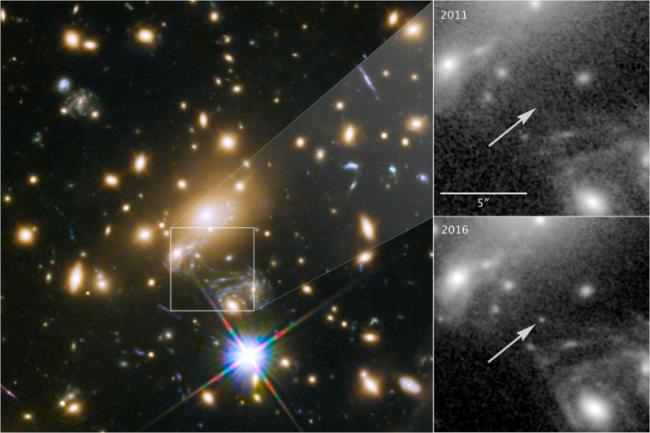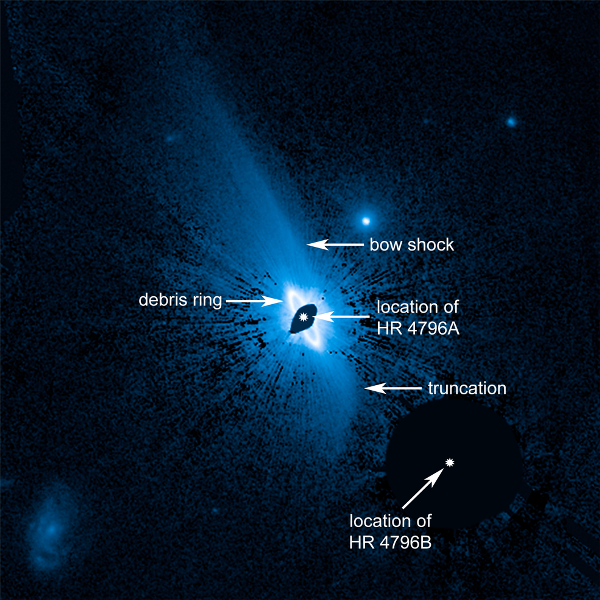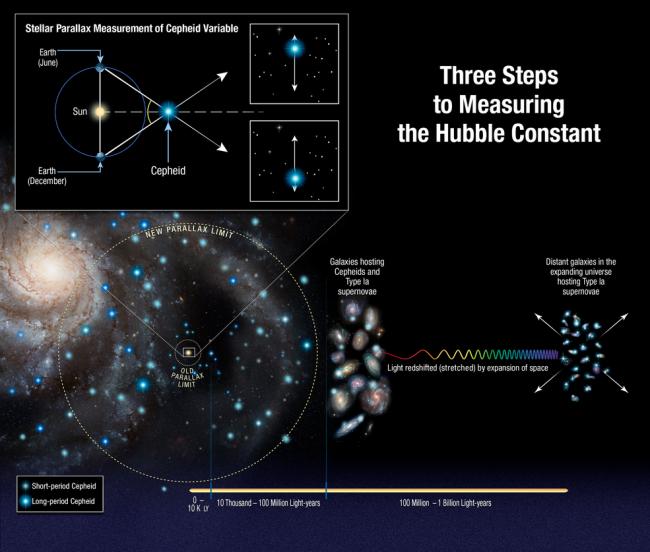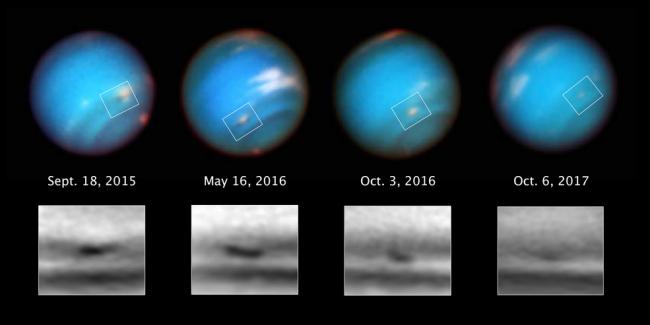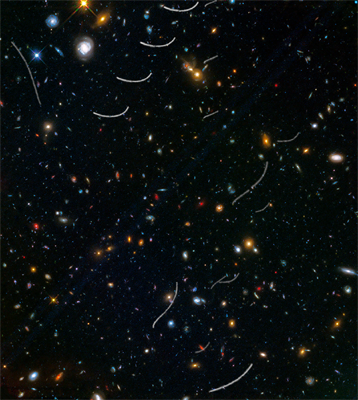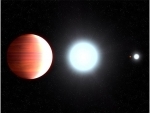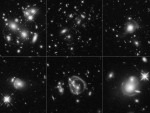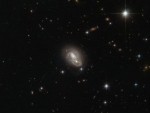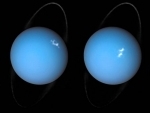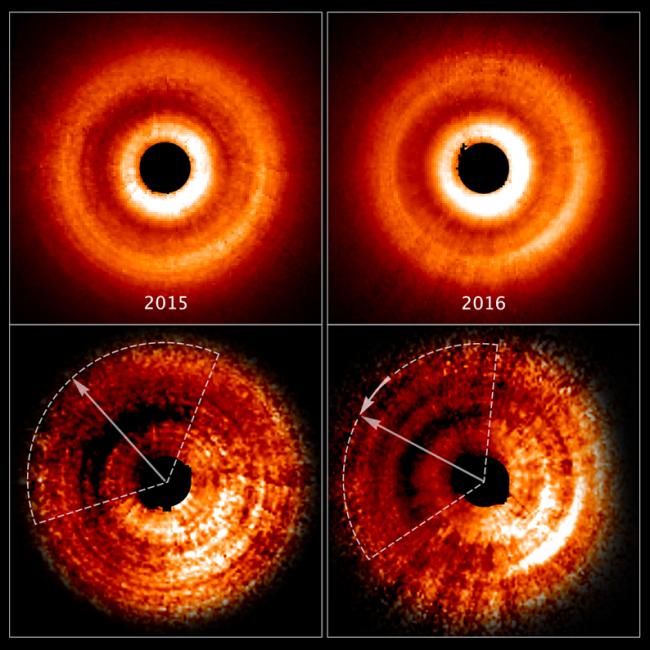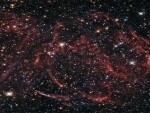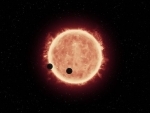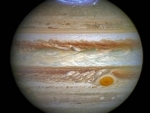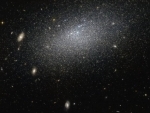Hubble uncovers the farthest star ever seen
Washington, Apr 3 (IBNS): More than halfway across the universe, an enormous blue star nicknamed Icarus is the farthest individual star ever seen. Normally, it would be much too faint to view, even with the world’s largest telescopes. But through a quirk of nature that tremendously amplifies the star’s feeble glow, astronomers using NASA’s Hubble Space Telescope were able to pinpoint this faraway star and set a new distance record.
Hubble finds huge system of dusty material enveloping young star HR 4796A
Washington, Mar 8 (IBNS): Astronomers have used NASA's Hubble Space Telescope to uncover a vast, complex dust structure, about 150 billion miles across, enveloping the young star HR 4796A. A bright, narrow, inner ring of dust is already known to encircle the star and may have been corralled by the gravitational pull of an unseen giant planet.
Improved Hubble Yardstick gives fresh evidence for new physics in the universe: NASA
Washington, Feb 23 (IBNS): Astronomers have used NASA's Hubble Space Telescope to make the most precise measurements of the expansion rate of the universe since it was first calculated nearly a century ago. Intriguingly, the results are forcing astronomers to consider that they may be seeing evidence of something unexpected at work in the universe.
Hubble sees Neptune's mysterious shrinking storm
Washington, Feb 16 (IBNS): Three billion miles away on the farthest known major planet in our solar system, an ominous, dark storm – once big enough to stretch across the Atlantic Ocean from Boston to Portugal – is shrinking out of existence as seen in pictures of Neptune taken by NASA’s Hubble Space Telescope.
Hubble sees nearby asteroids photobombing distant galaxies
Washington, Nov 4 (IBNS): Like rude relatives who jump in front of your vacation snapshots of landscapes, some of our solar system's asteroids have photobombed deep images of the universe taken by NASA's Hubble Space Telescope.
Hubble observes exoplanet that snows sunscreen
Washington, Oct 27 (IBNS): NASA's Hubble Space Telescope has found a blistering hot planet outside our solar system where it "snows" sunscreen.
Cosmic magnifying-glass effect captures Universe's brightest Galaxies
Washington, June 7 (IBNS): Boosted by natural magnifying lenses in space, NASA's Hubble Space Telescope has captured unique close-up views of the universe's brightest infrared galaxies, which are as much as 10,000 times more luminous than our Milky Way.
Hubble catches a Galaxy duo by the "Hare"
Washington, May 13 (IBNS): An image from the NASA/ESA Hubble Space Telescope shows the unusual galaxy IRAS 06076-2139, found in the constellation Lepus (The Hare).
Hubble spots Auroras on Uranus
Washington, Apr 10 (IBNS): This is a composite image of Uranus by Voyager 2 and two different observations made by Hubble — one for the ring and one for the auroras.
Hubble captures ‘Shadow Play’ caused by possible planet
Washington, Jan 10 (IBNS): Searching for planets around other stars is a tricky business. They’re so small and faint that it’s hard to spot them. But a possible planet in a nearby stellar system may be betraying its presence in a unique way: by a shadow that is sweeping across the face of a vast pancake-shaped gas-and-dust disk surrounding a young star.
Hubble gazes at long-dead star
Washington, July 29 (IBNS): This NASA/ESA Hubble Space Telescope image captures the remnants of a long-dead star.
NASA’s Hubble Telescope makes first atmospheric study of Earth-sized exoplanets
California, July 21 (IBNS): Using NASA’s Hubble Space Telescope, astronomers have conducted the first search for atmospheres around temperate, Earth-sized planets beyond our solar system and found indications that increase the chances of habitability on two exoplanets.
Hubble captures vivid auroras in Jupiter’s atmosphere
Washington, July 1 (IBNS)Astronomers are using the NASA/ESA Hubble Space Telescope to study auroras — stunning light shows in a planet’s atmosphere — on the poles of the largest planet in the solar system, Jupiter. This observation program is supported by measurements made by NASA’s Juno spacecraft, currently on its way to Jupiter.
Hubble uncovers a mysterious Hermit
Washington, June 11 (IBNS): The drizzle of stars scattered across this image forms a galaxy known as UGC 4879. UGC 4879 is an irregular dwarf galaxy — as the name suggests, galaxies of this type are a little smaller and messier than their cosmic cousins, lacking the majestic swirl of a spiral or the coherence of an elliptical.





